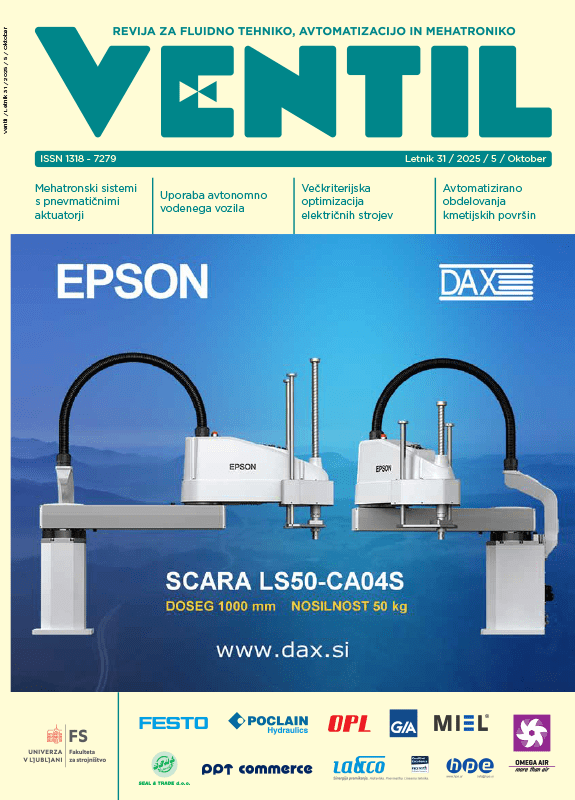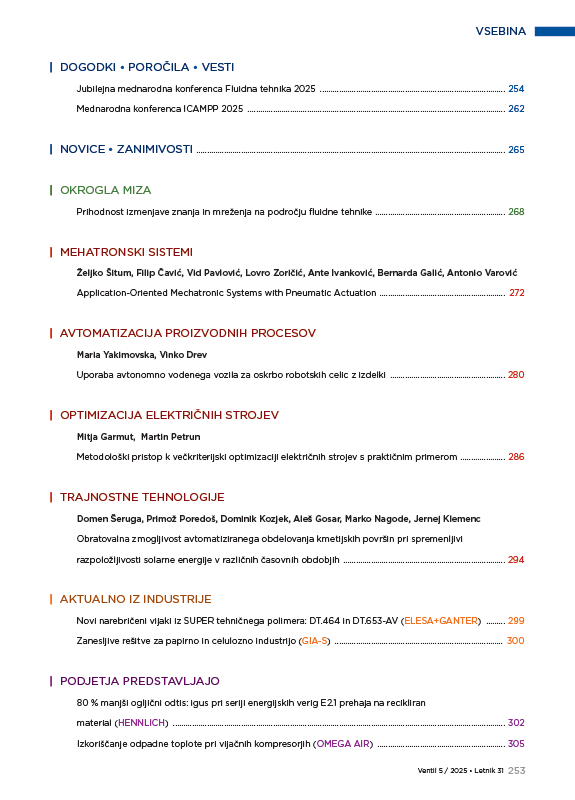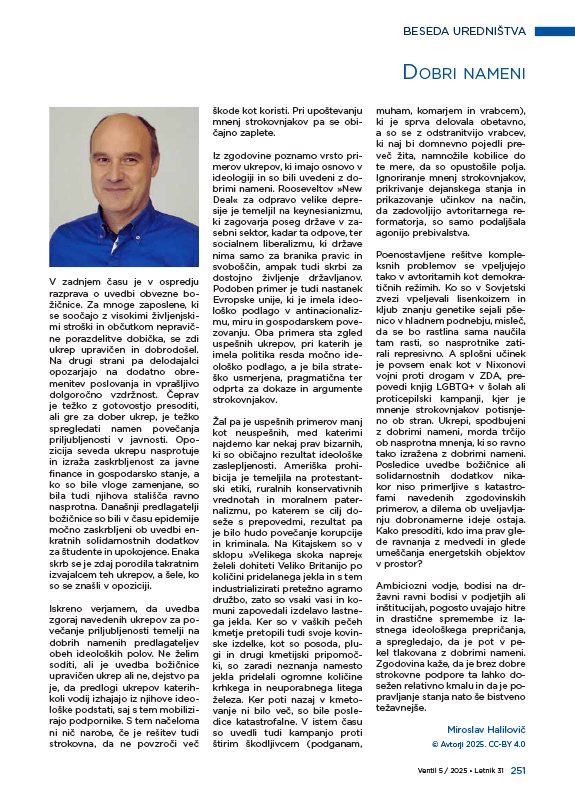
Journal for Fluid Power, Automation and Mechatronics
Ventil is a peer-reviewed open access scientific as well as professional journal.
The main mission of VENTIL is the transfer of knowledge into practice, the further development and popularization of the areas of fluid power, automation and mechatronics, and care for the technical terminology in these areas.
Publisher: University of Ljubljana, Faculty of Mechanical Engineering
Editor-in-chief: izr. prof. dr. Miroslav Halilovič
Assistant editor: izr. prof. dr. Franc Majdič
Technical editor: Roman Putrih
THE JOURNAL IS IN OPEN ACCESS![]()
Ventil is open access journal with no article publishing charges. Authors retain copyright of their work and allow it to be shared and reused, provided that it is correctly cited.
Articles in Journal Ventil are published under the Creative Commons Attribution 4.0 International License.![]()
The Journal is subsidized by the Slovenian Research and Innovation Agency (ARIS).
Publication frequency: 6 issues per year.
The journal Ventil is indexed in the DOAJ database.
Current issue: October, 31 / 2025 / 5
Previous issues of the magazine can be viewed in the ARCHIVE section.
Featured articles
INNO2MARE – Pilot projects to strengthen the capacity and scientific excellence of Slovenian and Croatian innovation ecosystems
The LASIM laboratory at the Faculty of Mechanical Engineering, University of Ljubljana, is coordinator of the INNO2MARE project, which aims to strengthen the capacities for excellence in the innovation ecosystem of Western Slovenia and the Adriatic Croatia through a set of jointly designed and implemented actions that will support the digital and green transition of the maritime and related industries.
Petra Pintar, doc. dr. Marko Šimic, prof. dr. Niko Herakovič, univ. dipl. inž., all from Faculty of Mechanical Engineering, University of Ljubljana
Durability tests of 3D printed water-hydraulic proportional directional control valves
Despite the fact that water is rarely used in power-control hydraulics (PCH), advanced technologies such as 3D printing of metal components are opening new possibilities for the wider adoption of water PCH. With metal 3D printing, valve mass can be significantly reduced while improving flow characteristics, thanks to the ability to produce complex internal geometries not achievable with traditional methods.
Žan Spačal, študent. izr. prof. dr. Franc Majdič, univ. dipl. inž., prof. dr. Mitjan Kalin, univ. dipl-. inž., dr. Ana Trajkovski, univ. dipl. inž., Univerza v Ljubljani, Fakulteta za strojništvo
LEAP – razvoj zaščitne embalaže iz alternativnih lignoceluloznih vlaken
Laboratorij LADISK na Fakulteti za strojništvo Univerze v Ljubljani deluje kot koordinator projekta LEAP, katerega cilj je razvoj naslednje generacije trajnostne funkcionalne em- balaže. Ta vključuje gradnike iz odpadne biomase invazivnih tujerodnih rastlinskih vrst in omogoča izdelavo novih, konstrukcijsko visoko zmogljivih embalažnih rešitev. Projekt je izjemno pomemben, saj se osredotoča na trajnostni prehod v krožno ekonomijo, ki te- melji na biološki razgradljivosti in zmanjšanju porabe deviških materialnih virov, obenem pa obravnava problematiko recikliranja odpadkov tujerodnih rastlinskih vrst.
Gregor Čepon, Gregor Ševerkar, Miha Pogačar, Urška Kavčič, David Ravnjak, Jawad Elomari, Aleš Mihelič, Miha Bolteža
Science and expert articles
Operational capacity of automated agricultural land processing under variable solar energy availability across different time periods
Sustainable cultivation of urban agricultural areas in the future can be achieved by using automated fleets of processing robots that will be able to adapt their activities to the availability of solar energy. Since this energy source varies depending on the season, it is crucial to consider several factors when designing power systems and algorithms for robot operation.
Methodological Approach to Multi-Objective Optimization of Electrical Machines with a Practical Case Study
This paper introduces a structured approach to the multi-objective optimization of electrical machines. The process covers the key steps: defining the problem, identifying the most relevant key performance indicators and constraints, setting the design space, formulating objective functions, and then modeling and evaluating the results.
Use of Automated Guided Vehicle for Supplying Robotic Cells with Products
This paper presents the use of an Automated Guided Vehicle (AGV) for supplying robotic cells with products at LTH Castings d.o.o., a company that has been successfully expanding its business for many years while placing strong emphasis on investments in the automation of the production processes. Although the current level of automation is already high, further investments in this area are essential, as the rapid development of industry requires continuous upgrading and optimization.




